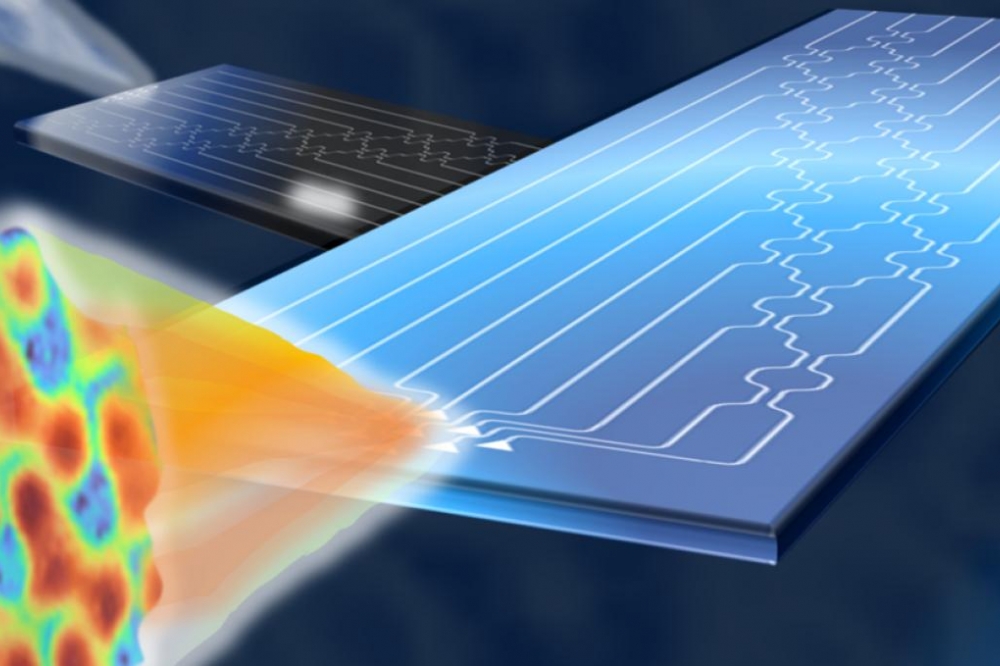Photonic chip calculates how light can evade obstacles

Image credit: Politecnico di Milano
A new paper published in Nature Photonics reports that scientists have created photonic chips that mathematically calculate the optimal shape of light to best pass through any environment, even one that is unknown or changing over time. The research was conducted by scientists at Politecnico di Milano, in collaboration with Sant'Anna School in Pisa, the University of Glasgow and Stanford University.
It is a well-known problem that light is sensitive to obstacles, even very small ones. Think, for example, of how it is distorted by frosted windows or simply when glasses get foggy. The effect is quite similar on a beam of light carrying data streams in optical wireless systems; if the light encounters an obstacle, the information can become distorted, making it extremely difficult to retrieve.
The authors of the new study say they have developed small silicon chips that can address this challenge by acting as smart transceivers; working in pairs, the devices can automatically and independently 'calculate' what shape a beam of light needs to be in order to pass through a generic environment with maximum efficiency. Additionally, the paper reports that the chips can also generate multiple overlapping beams, each with its own shape, and direct them without them interfering with each other, significantly increasing transmission capacity.
“Our chips are mathematical processors that make calculations with light very quickly and efficiently, almost with no energy consumption,” explained Francesco Morichetti, head of the Photonic Devices Lab of Politecnico di Milano. “The optical beams are generated through simple algebraic operations, essentially sums and multiplications, performed directly on the light signals and transmitted by micro-antennas directly integrated on the chips. This technology offers many advantages: extremely easy processing, high energy efficiency and an enormous bandwidth exceeding 5000 GHz.”
Andrea Melloni, director of Polifab, the micro and nanotechnology centre of Politecnico di Milano, commented: “Today, all information is digital, but in fact, images, sounds and all data are inherently analogue. Digitisation does allow for very complex processing, but as the volume of data increases, these operations become increasingly less sustainable in terms of energy and computation. Today, there is great interest in returning to analogue technologies, through dedicated circuits (analogue co-processors) that will serve as enablers for the 5G and 6G wireless interconnection systems of the future. Our chips work just like that.”
Marc Sorel, professor of electronics at the Telecommunications, Computer Engineering, and Photonics Institute (TeCIP) of Sant'Anna School, added: “Analogue computing using optical processors is crucial in numerous application scenarios that include mathematical accelerators for neuromorphic systems, high-performance computing (HPC) and artificial intelligence, quantum computers and cryptography, advanced localisation, positioning and sensor systems, and in general, in all systems where the processing of large amounts of data at very high speed is required.”



































